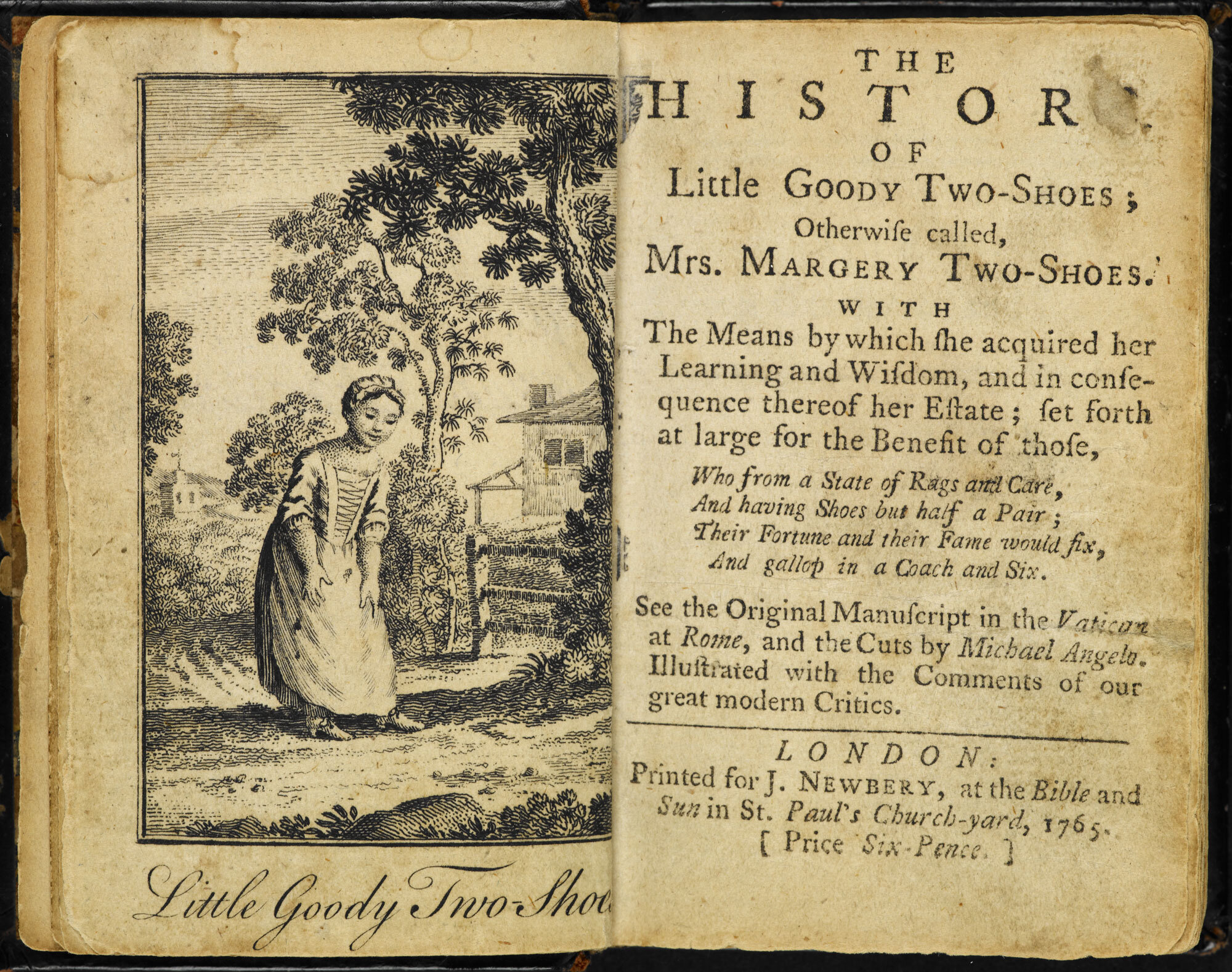6 November 2020
Words, like people, sometimes have a seamy underbelly that belies their innocent countenance. Such is the case with the phrase goody two-shoes. To be a goody two-shoes is to be well behaved, to follow the rules, and perhaps to be a bit smug about those who do not.
This sense comes from an anonymous 1765 children’s morality tale published by John Newberry, The History of Little Goody Two-Shoes. The story is that of Margery Meanwell, who is orphaned, along with her brother Tommy Meanwell. Margery in rags and with only one shoe, is given a pair of shoes by a kindly gentleman. Her fortunes begin to change at that moment. She works hard, marries well, comes into wealth, and then uses that wealth to help the poor.
Present-day speakers often interpret the goody as a reference to the quality of being good, but it is originally a term of address akin to Mrs. It is short for Goodwife, which existed alongside its male counterpart Goodman.
But Margery Meanwell was not the first to bear that appellation.
The designation Goodman Two-Shoes was first applied to John Hewson in 1659. Hewson was a cobbler by trade who served as a colonel in Cromwell’s New Model Army. He was one of the signers of Charles I’s death warrant, thus committing regicide, and later sat in the Upper House, the Commonwealth’s equivalent to the House of Lords. Upon the restoration of the monarchy, Hewson fled to the Continent, where he died in 1662.
Hewson, because he had been a cobbler, was referred to as a goodman two shoes in this 1659 pamphlet calling for his being brought to justice:
Was the black Rod do you think, ever intended or designed to whip Coblers? or will Princes Robes sit handsom on Brewers backs, and yet this goodman two shoes, by a relish and smack of Lordly Dignity, did confidently personate that pretended Honour, and acted not barely as a Lord in his late Riot and Tumult, but usurped the Authority and Power as if he had been our Lord Mayor.
By 1673, Goodman Two-Shoes was being used as an epithet for a common man, one of ordinary position and tastes. Here is a 1673 tract by John Eachard in which two characters, Philautus and Timothy, debate Thomas Hobbes philosophy:
Tim. Not a word, Sir, and 'twas well for the poor Gentleman, Philautus, that you were so nigh at hand; or else, by chance, he might have gone to Bedlam, for want of a Trainer. But suppose, Sir, instead of the Roman penny, he had asked what was the reason that Ginger is spelt with a G, and Jeopardy with an J. Must he needs have gone for't: could not you have dropt down a little soder, and relief upon such an unfortunate extravagancy?
Phi. What's that to you Goodman-two-shoes: am I bound to acquaint you with all that I can do?
Tim. Nay, I hope no offence, Sir: for I am confident you that have such excellent skill at putting a thought off the squat, could have easily don't.
And this passage from a 1689 poem by Charles Cotton uses the epithet of Goody Two-Shoes for a complaining woman:
But now into th'Pottage each deep his Spoon claps,
As in truth one might safely for burning one's chaps,
When streight, with the look and the tone of a Scold,
Mistress May'ress complain'd that the Pottage was cold,
And all long of your fiddle-saddle, quoth she;
Why, what then, Goody two-shoes, what if it be?
Hold you, if you can, your tittle-tattle, quoth he.
And this passage from the 1690 anonymous “An Answer to Clemons Alexandrinus’s Sermon Upon Quis Dives Salvetur?” shows the disregard in which a Goodman Two Shoes is held:
I have before insinuated, that a good rich witty Man may do any thing but be damn'd. But I see some People pricking up their Ears there. You Goodman Two shoes, and you Gammer Two shoes, and you Tom Trap, and you Dick Frost, and you Goody Gurton, that have lain in Straw ever since your Bed was taken away for Plunder in the Civil Wars, let me tell ye, you are poor stupid Wretches; your duller Flame will be more easily exstinguish'd; you meaner sinful Scrubs are generally given over to a reprobate Mind; your Barley Bread and Pease Pudding make you heavy and stupid, and if you don't take care you will die as stupidly as you liv'd.
So, the author of the 1765 children’s story took an epithet for a commoner, stripped away its negative association, made it literal in that Margery is given two shoes, and due to the book’s popularity (it was in its third edition within a year) the name Goody Two-Shoes cleaned up its act, hid its disreputable past, and took on a new meaning.
Sources:
“An Answer to Clemons Alexandrinus’s Sermon Upon Quis Dives Salvetur? What Rich Man Can Be Saved. London: 1690. Early English Books Online (EEBO).
Cotton, Charles. Poems on Several Occasions. London: Thomas Bassett, 1689, 184. Early English Books Online (EEBO).
Eachard, John. Some Opinions of Mr. Hobbs Considered in a Second Dialogue Between Philautus and Timothy. London: J. Macock for Walter Kettilby, 1673, 12–13. Early English Books Online (EEBO).
The History of Little Goody Two-Shoes, third edition. London: J. Newberry, 1766. Eighteenth Century Collections Online (ECCO).
“The Outcry of the London Prentices for Justices to be Executed upon John Lord Hewson.” London: Gustavus Adolphus, 1659, 4. Early English Books Online (EEBO).
Oxford English Dictionary, third edition, December 2014, s.v., goody-two-shoes, n. and adj., goodman, n., goody, n.1.
Image Credit: British Library.

